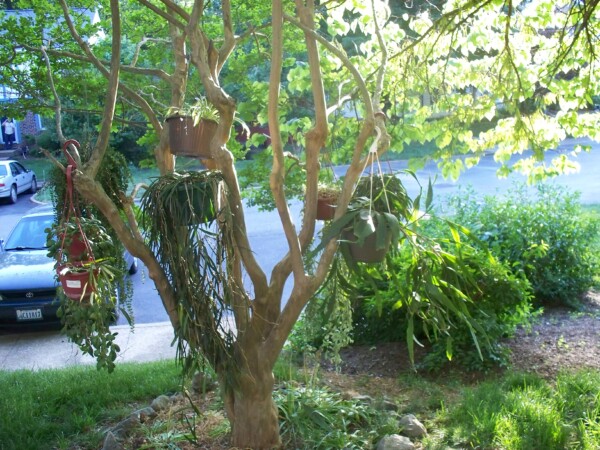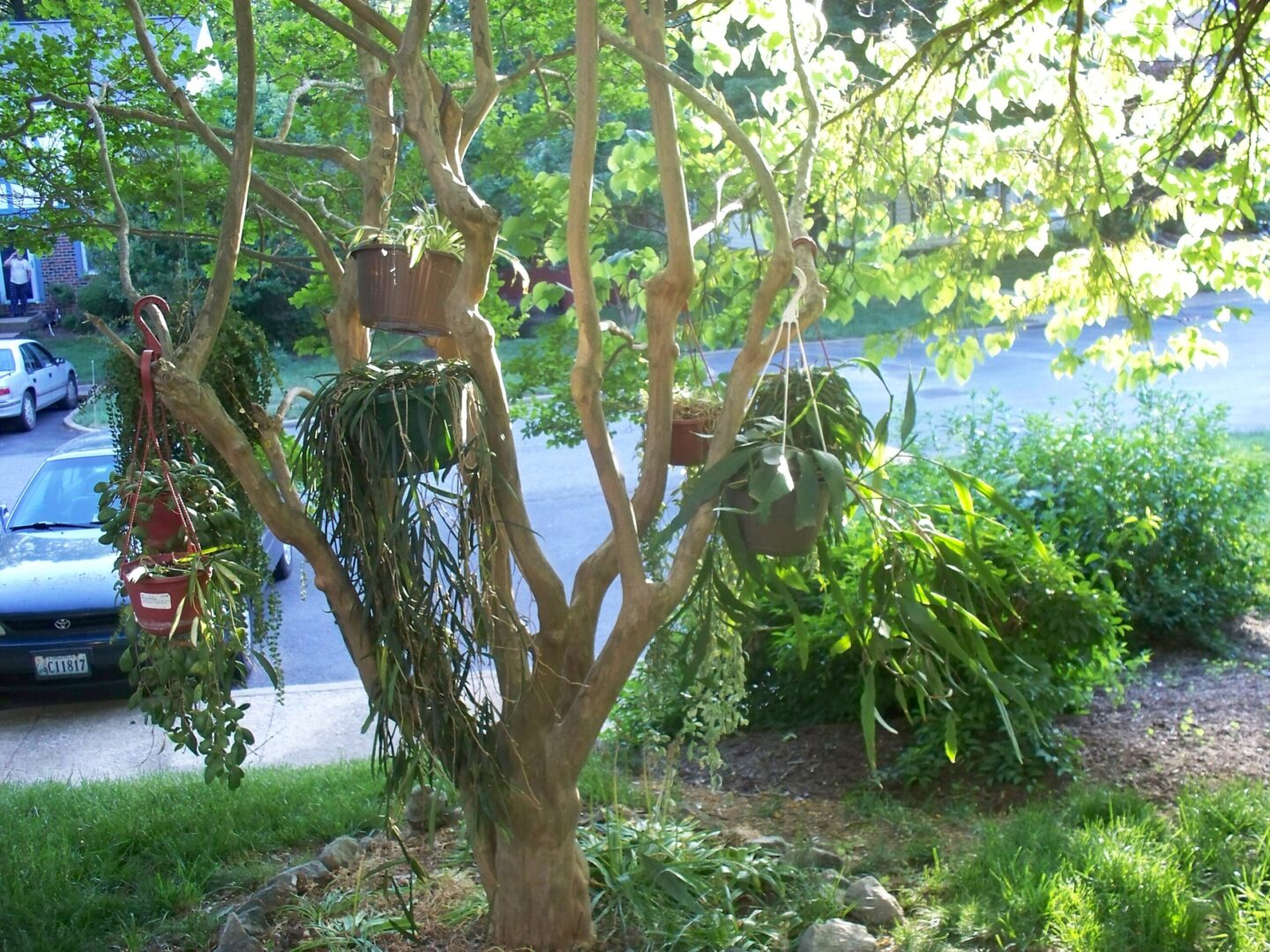
My houseplants are all outside for the summer. Does this mean I can forget about them? Well—no! Here are somethings you should be doing for your houseplants now—either inside or out. The days are longer and the sunlight stronger so our plants are actually growing—not just “maintaining” like they do all winter. A little fertilizer would be in order. What to feed? Well, cacti and succulents like a somewhat lower nitrogen plant food—an African violet food works great. Any blooming plants (besides orchids) could also use some African violet food, so could any amaryllis you’re keeping, and definitely Christmas cactus. Orchids, on the other hand, should get 20-20-20 half-strength half as often as the label says. Foliage plants (like ferns, philodendrons, ficus, etc.) could also use the 20-20-20. Any citrus plants should have had some Citrus-tone last month, but if you missed it, then feed them right now and feed them one more time around Labor Day. If you’d prefer an organic plant food, then Neptune’s Harvest Fish Emulsion Seaweed Blend is good. If you’ve got houseplants that are beginning to out-grow their space inside, now would be a good time to do a little pruning, if necessary. Also, watch that fertilizer—you might want to feed those GIANT plants half-strength. I don’t generally have much of an insect problem on my houseplants during the summer, but occasionally see aphids on tender new orchid buds or a slimy slug trail on my Duranta. So keep an eye out for six-legged pests or annoying pests like mealy bug (looks like bits of cotton lint) or scale (raised brown or tan “bumps” that you can scrape off with a fingernail). And to keep slugs and ants out of the pots, I don’t set the pots directly on the ground, but on my deck or even on an upside down terra cotta saucer. Hanging baskets, I just hang on the lower branches of my crape myrtle. Watering needs change during the summer. Plants that are outside where the temperatures are hot and the air is breezy are going to dry out faster than they did in the house. However, watering needs even change for indoor plants as the days are longer and brighter. When you do water, be sure to water thoroughly, so that water begins to trickle out the bottom. Do not allow plants to stand in water longer than a few minutes, however. And never water until the top of the soil has dried out some—how far down will depend on the plant—just try to avoid letting a plant wilt. Around Labor Day, I move most of my houseplants into slightly less sun outdoors, getting them ready for that traumatic shift back inside in October. By the end of September, all my houseplants will be up next to the house, directly outside the windows where they’ll be when I move them inside. Getting them used to lower light outside makes the transition back inside so much easier. Remember, if you have any questions about your specific plant care needs, we’re here to help.

